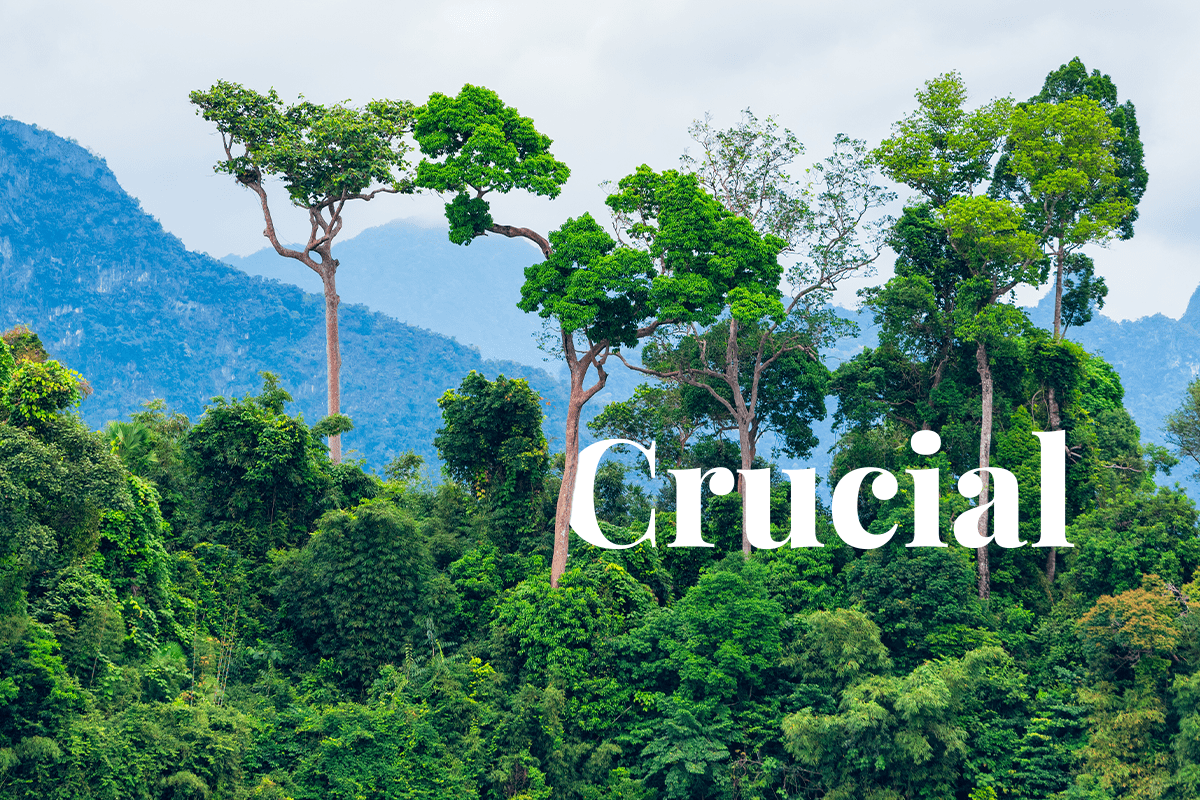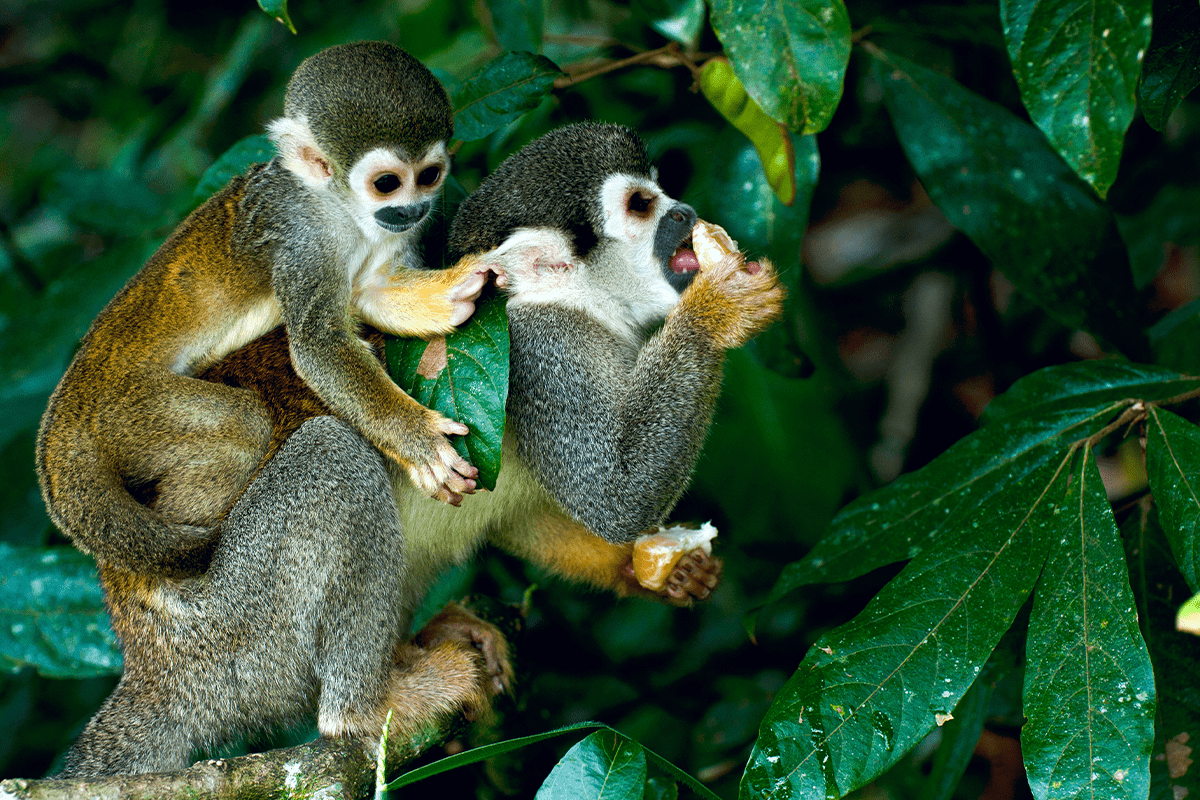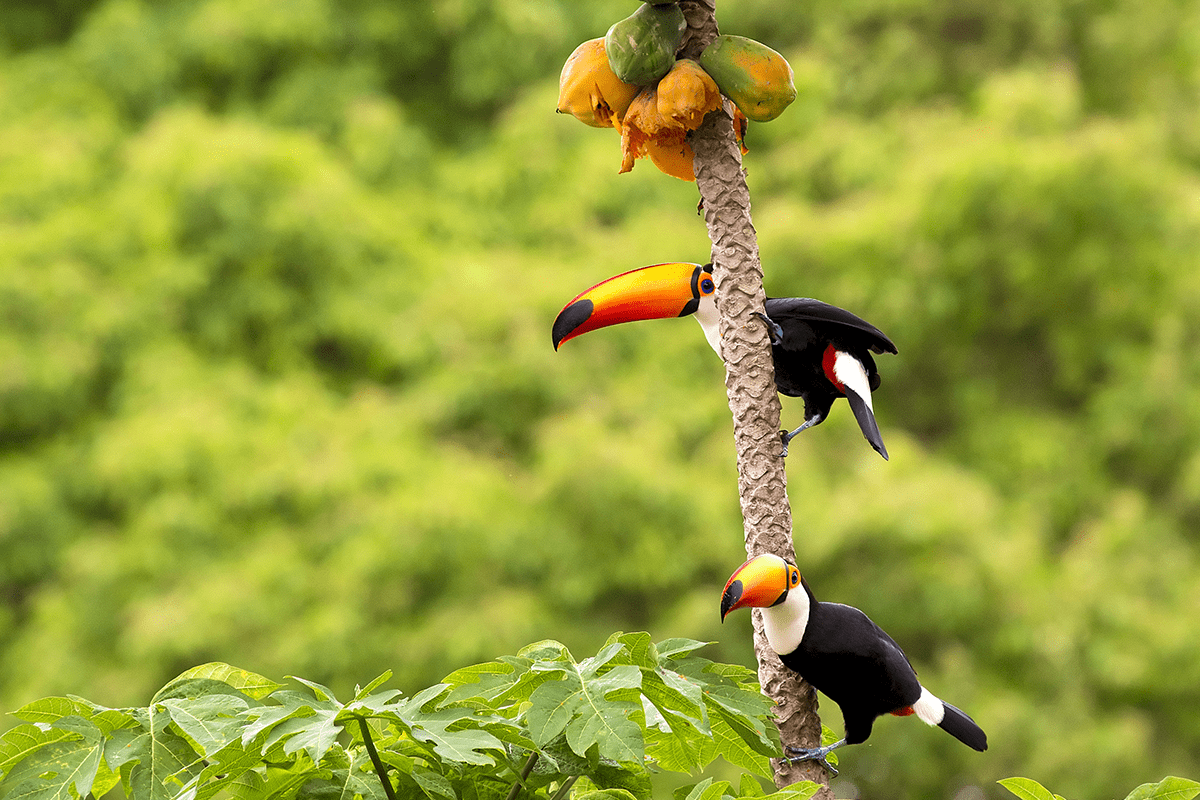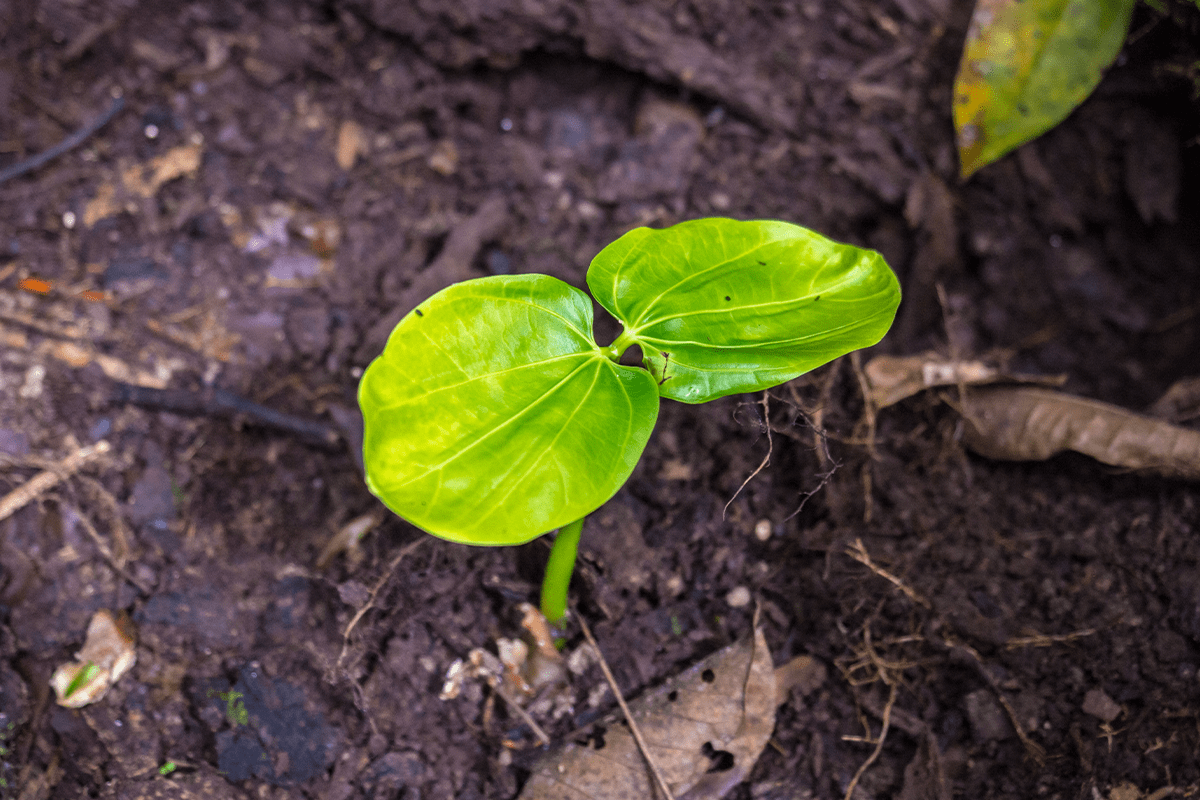Deforestation in the Amazon is an environmental issue that continues to be a major concern across Latin America and beyond. Tropical forests play a critical role in both local and global ecosystems. They provide habitat for wildlife, sequester carbon dioxide from the atmosphere, protect biodiversity, and provide valuable resources for nearby communities. It is estimated that over 20% of global rainforests have already been destroyed due to land clearing for agricultural production, logging, mining, and other human activities. In addition to its devastation of the natural environment, deforestation also contributes significantly to changing climates by releasing tonnes of carbon dioxide into the atmosphere.
 Tropical Amazon Rainforest, Brazil.
Tropical Amazon Rainforest, Brazil.
This article will examine the large-scale destruction of the forest cover in the Amazon for cattle pastures and other human activities, as well as the resulting impacts on air quality, climate, biodiversity loss, and Indigenous rights. It will also discuss strategies for reducing deforestation and protecting the Amazon's delicate ecosystems.
What is deforestation?
Deforestation, as the name suggests, is the process of clearing a forest or a large area of trees to make space for other land uses, such as agriculture, commercial development, or urbanisation. While deforestation can occur in any part of the world, the rate of deforestation in the Amazon Rainforest in Brazil is one of the most severe worldwide.
Read more: Top 10 causes of deforestation
Deforestation can happen naturally, for example, when forests are destroyed by wildfires, disease, or insect infestations. However, human activities like logging, mining, and agriculture are the main drivers of deforestation in the Amazon Rainforest and globally.
Tropical deforestation is a significant concern because tropical rainforests play a crucial role in regulating the Earth's climate, supporting biodiversity, and providing essential resources for human survival. The Amazon Rainforest alone is home to millions of plant and animal species and produces around 20% of the world's oxygen.
Read more: What are the effects of deforestation?
Deforestation has harmful effects on the environment and the economy. The loss of forests contributes to climate change by releasing carbon dioxide into the atmosphere and reducing the planet's ability to absorb it. Deforestation also leads to soil erosion, loss of biodiversity, and potential water shortages.
Thus, deforestation is a complex issue with significant implications for our planet's health and the wellbeing of all living things. By understanding the causes and consequences of deforestation, we can work towards implementing solutions for a more sustainable future.
You can help reduce deforestation with DGB Group and contribute to creating a greener planet for all. You can compensate for your carbon footprint by purchasing high-quality carbon units from our verified nature-based projects, which restore forests and protect biodiversity. You can green your business with our trees for businesses by planting trees on behalf of your customers or employees to showcase your commitment to the environment. Or you can make a personal impact by subscribing to our tree planting programme, where you plant trees monthly and help to grow vibrant forests.
 Saimiri (Squirrel monkeys) sitting and eating fruits in a tree branch. Amazon Rainforest, Brazil.
Saimiri (Squirrel monkeys) sitting and eating fruits in a tree branch. Amazon Rainforest, Brazil.
Brief overview of the Amazon Rainforest
The Amazon Rainforest, the largest rainforest in the world, is a lush and vibrant ecosystem spanning across nine countries in South America, covering an area of over 5.5 million square kilometres, of which almost 60% is in Brazil. It is famously known as the 'lungs of the world,' producing 20% of the Earth's oxygen and playing a crucial role in regulating the planet's climate.
But it's not just the ecological importance that makes the Amazon Rainforest a wondrous place. The rainforest is home to over one million Indigenous people and millions of species of plants and animals, many of which are found nowhere else in the world. From jaguars and macaws to medicinal plants and exotic fruits, the Amazon Rainforest is a treasure trove of biodiversity.
Read more: Impact of forests on biodiversity
However, the Amazon Rainforest is facing significant threats given the rates of deforestation, mainly from human activities like deforestation, mining, and agriculture, but also from natural events like forest fires. These activities have devastating impacts on the ecosystem and the people who depend on it, including Indigenous communities who have called the rainforest home for thousands of years.
Despite these challenges, the Amazon Rainforest can be restored with collective support. Many organisations and individuals are working to protect the rainforest through sustainable practices, conservation efforts, and education initiatives. And we can all do our part, whether it's reducing our consumption of products linked to deforestation or supporting eco-friendly practices.
The Amazon Rainforest is undoubtedly one of our planet's most incredible and important ecosystems. It's up to us to protect it so future generations can enjoy its beauty and benefits for years to come.
 Native tribal man canoeing in the Amazonian rainforest on a handmade boat.
Native tribal man canoeing in the Amazonian rainforest on a handmade boat.
Causes for deforestation in the Amazon
Deforestation in the Amazon is one of the biggest ecological crises of our time. The Amazon Rainforest is unmatched in its biodiversity, with millions of plant and animal species that call it home. However, human activities such as agriculture, mining, and logging are causing significant damage to the rainforest. Here are some of the main causes of Amazonian deforestation:
-
Agriculture: Cattle ranches and soybean production are the largest drivers of deforestation in the Amazon. Soybeans are in high demand globally, and the Amazon is a prime location for growing this crop due to its fertile soil. Unfortunately, clearing forests to create new agricultural land is often the easiest and cheapest solution for farmers. Brazil is one of the world's largest beef exporters, and to raise their cattle, ranchers need huge tracts of land.
Read more: How regenerative agriculture is transforming sustainable farming
-
Logging: Logging for commercial purposes is another major cause of deforestation. Trees are cut down for timber used in furniture, paper, and other products.
-
Mining: The demand for minerals like gold and iron ore drives mining in the Amazon. Mining activities are causing widespread destruction to the rainforest, including water pollution and soil degradation.
-
Human activity: The growth of human populations in and around the Amazon is increasing pressure on the rainforest. Infrastructure development, such as roads, dams, and hydropower projects, is also contributing to deforestation.
The negative impact of forest loss in the Amazon is vast. It leads to habitat loss for millions of species, including endangered animals like the jaguar and giant otter. Deforestation also contributes to greenhouse gas emissions and climatic instability, as the forest serves as a natural carbon sink, capturing carbon emissions.
Read more: Why should endangered species be protected?
To tackle deforestation in the Amazon, it is important to understand its root causes. By reducing demand for products linked to deforestation and supporting sustainable practices, we can all play a role in protecting this vital ecosystem.
The effects of deforestation in the Amazon
When we think about the Amazon forest, we imagine a lush, green forest teeming with wildlife and plants that are unique to this precious ecosystem. However, the reality is that deforestation is severely impacting this natural wonder, and the effects are alarming.
One of the most significant effects of deforestation in the Amazon is the displacement of Indigenous peoples. These communities have a deep connection with the land and depend on it for their survival. When forests are cut down, their homes, livelihoods, and very existence are threatened.
Read more: Why are tropical rainforests important?
Another impact of deforestation is the loss of biodiversity. The Amazon is home to an incredible array of species, many of which are found nowhere else in the world. When forests are destroyed, these animals lose their habitat, and many cannot survive. This, in turn, affects the balance of the entire ecosystem, and the consequences can be far-reaching.
Read more: Deforestation in the United States: causes, consequences, and cures
 A pair of toucans sitting on a tree branch. Amazon Rainforest.
A pair of toucans sitting on a tree branch. Amazon Rainforest.
Deforestation also leads to soil erosion, which affects the quality of the soil and its ability to support plant and animal life. The Amazon is known for its fertile soil. Even so, when forests are removed, the soil can quickly become depleted, leading to a loss of productivity and economic opportunities for local traditional communities.
Perhaps the most significant impact of deforestation in the Amazon is its effect on the climate. Trees are natural carbon sinks, and when they are cut down, large amounts of carbon dioxide are released into the atmosphere. This exacerbates the effects of climate change, contributing to rising temperatures, rising sea levels, and more frequent natural disasters.
Read more: Breathe easy: How trees are nature's air-cleaning machines
It's easy to see why deforestation in the Amazon is a cause for concern. From the loss of biodiversity to the displacement of Indigenous peoples, the effects are far-reaching and devastating. It's up to us to take action to protect this precious ecosystem, whether through supporting conservation efforts or living a more sustainable lifestyle.
Recent trends in deforestation rates
Deforestation has been a hot topic for quite some time now, and it's not going away anytime soon. In fact, in the past years, deforestation rates in the Amazon have been on the rise, and the consequences are dire. In 2022, the Brazilian Amazon Rainforest witnessed a dramatic peak in deforestation: it lost the equivalent of nearly 3,000 soccer fields a day.
According to the Food and Agriculture Organization (FAO), approximately 10 million hectares of global forests are lost every year. Picture an area the size of Iceland but without the icy coolness. Instead, it's a wasteland. According to Brazil's National Institute for Space Research, deforestation in the Brazilian Amazon rose more than 50% in the first three months of 2020 compared to the same period in 2019.
Contribute to restoring nature by reducing your carbon footprint
The Amazon Rainforest loses an average of 1.4 billion trees each year. When trees are cut down, they release carbon dioxide, a significant contributor to the climate crisis we're facing. That is why deforestation is responsible for roughly 15% of global greenhouse gas emissions each year. That's on par with the entire transportation sector's emissions worldwide, including cars, planes, and ships.
So, what's driving this increase in deforestation rates?
- Deforestation is often driven by human activity, such as agriculture, human settlements, and infrastructure development. One major driver is agriculture, specifically the production of soybeans and cattle ranching. Cattle ranching and soybean farming are colossal culprits, with cattle ranching accounting for 80% of current deforestation in the Amazon. As demand for these products increases, more and more land is cleared to make room for crops and grazing.
- Illegal logging is another significant contributor, with millions of trees lost to this illicit activity every year. Despite efforts by environmental agencies and the Brazilian federal government to crack down on the practice, it continues to happen at an alarming rate. Traditional communities and Indigenous land are often the targets of these illegal activities, displacing people and disrupting their way of life.
- The dry season also plays a role in deforestation rates. During this time, it's easier for fires to ignite and spread, making it easier for land to be cleared quickly. Unfortunately, deforestation-related fires can lead to devastating consequences, such as the loss of homes and businesses and even the loss of life.
So, what can be done to combat these trends in deforestation rates? Sustainable development and economic incentives for landowners who preserve forests are a great place to start. Additionally, supporting Indigenous communities and traditional land use practices can help protect valuable ecosystems and promote biodiversity. We discuss these and other solutions in more detail later in this article.
The bottom line is that we can't afford to ignore deforestation's impact on our planet. It's time to take action and take responsibility for our actions. The future of our planet depends on it.
Moreover, it's not just the atmosphere that suffers from deforestation. Forests serve as habitats for a large portion of our planet's wildlife. Can you imagine losing over 80% of the world's terrestrial biodiversity and species due to deforestation?
Read more: From the brink of extinction: 4 endangered species that made a comeback
Although deforestation rates in the Amazon remained high in 2022, the good news is that in April 2023, deforestation rates dropped by 72%. This was due in part to increased enforcement of environmental laws and campaigns to promote sustainable agriculture and forestry practices. However, there is still much more work to be done to protect this vital ecosystem.
The Amazon Rainforest is not just a resource to be exploited. It is a precious and irreplaceable ecosystem that deserves our respect and protection. By educating ourselves on the factors driving deforestation and taking action to promote sustainable practices, we can all contribute to protecting this vital part of our planet.
Solutions to deforestation
Deforestation in the Amazon is a serious problem that threatens our planet's health and biodiversity. The Amazon Rainforest is often referred to as the 'lungs of the planet' because of its ability to absorb carbon dioxide and release oxygen. However, it's being destroyed at an alarming rate, which has negative consequences in the form of greenhouse gas emissions, habitat loss for animals, and a reduction in biodiversity. Let's explore four solutions to combat the Amazon deforestation:
1. Increased government regulations
One of the most practical ways to lessen deforestation in the Amazon is for the government to enforce laws that govern it. For example, the Brazilian government can create laws and regulations prioritising sustainable agricultural activities and forestry practices. The government can also implement measures that penalise individuals and companies that engage in illegal deforestation. This way, there will be a clear message to people that deforestation is impermissible.
2. Implementing nature-based solutions
Nature-based solutions are a promising pathway towards mitigating deforestation in the Amazon Rainforest. One such approach involves the restoration of degraded lands through reforestation efforts, which involves planting a diverse range of native tree species and allowing them to grow and regenerate over time. This can help prevent further deforestation by creating a barrier between remaining forests and areas susceptible to land-use change.
DGB develops large-scale nature-based projects that restore forests, rejuvenate biodiversity, and create vital habitats, all while offering many socio-economic benefits for local communities. Nature-based solutions are key to restoring our world's forests and offer many additional advantages.
 New plant in the Amazon forest. Brazil, South America.
New plant in the Amazon forest. Brazil, South America.
Another key method to prevent deforestation is through promoting sustainable development and providing economic incentives for landowners who preserve forests. A sustainable income through forest conservation and sustainable land management practices can provide economic incentives for local traditional communities to protect forests rather than exploit them for short-term gains. Additionally, supporting Indigenous communities and traditional land use practices can help protect valuable ecosystems and promote biodiversity. Implementing and ensuring the success of such solutions requires a concerted effort from various stakeholders, including governments, non-governmental organisations, and private sector actors. By prioritising nature-based solutions, it is possible to address deforestation in the Amazon while also safeguarding the region's biodiversity and supporting local livelihoods and Indigenous peoples.
Learn how you can restore forests with our carbon credits
3. Supporting nonprofit organisations
Supporting non-profit organisations that work towards protecting rainforests and planting trees is another way to combat deforestation. Rainforest Trust, Amazon Watch, and Rainforest Alliance are some of the many nonprofit organisations individuals can donate to. These organisations help reduce deforestation by purchasing land in the Amazon to protect it from logging and cattle ranching.
4. Offsetting your carbon footprint
Not all emissions are avoidable. By offsetting carbon emissions emissions that cannot be reduced or avoided, you can effectively reach net zero or carbon neutrality. This means that you strike a balance between the emissions you emit vs the emissions you remove from the atmosphere. This is achieved by implementing carbon-reduction strategies and offsetting hard-to-abate emissions. Carbon offsetting is a crucial tool to restore nature as it supports projects focussed on reforestation and nature restoration, such as those of DGB. DGB's large-scale projects plant millions of trees to restore forests and combat deforestation. By offsetting your environmental footprint with DGB, you invest in nature and help to create a greener tomorrow.
To achieve global environmental goals in line with the US Paris Agreement and mitigate harm to nature, we all have to take action and address our environmental impact to ensure a better, more sustainable world where nature can continue to support us. The first step is measuring your carbon footprint, reducing emissions that can be reduced, and then offsetting remaining emissions.
DGB Group’s trust in nature-based solutions as an answer to deforestation
With the right combination of government regulations, nature-based solutions, non-profit organisations, and individual action, deforestation in the Amazon can be addressed and reversed. By implementing laws that protect forests, restoring degraded lands with reforestation efforts, supporting rainforest protection projects through nonprofit donations, and offsetting your carbon footprint, we can ensure a healthy environment for generations to come.
Through our work in designing and implementing large-scale nature-based solutions, DGB Group is confident that nature-based solutions are one of the surest ways to prevent further deforestation and even reverse it. With everyone doing their part by making sustainable choices and supporting environmental initiatives, we can make a meaningful difference in protecting our planet.
DGB strongly supports and implements reforestation efforts worldwide, knowing firsthand the devastating impact of deforestation on our planet and its precious biodiversity. Join us on our quest to save the planet. With our innovative carbon projects and collaborations with stakeholders, we're making a tangible difference in preserving healthy ecosystems. Our unwavering commitment to preventing further deforestation and promoting biodiversity is central to our mission and our contribution towards a sustainable, prosperous future.
You can make a difference and help to create a cleaner, greener, and healthier planet for all. Whether it's through compensating for your carbon footprint with our innovative carbon solutions or planting trees, your impact matters.









